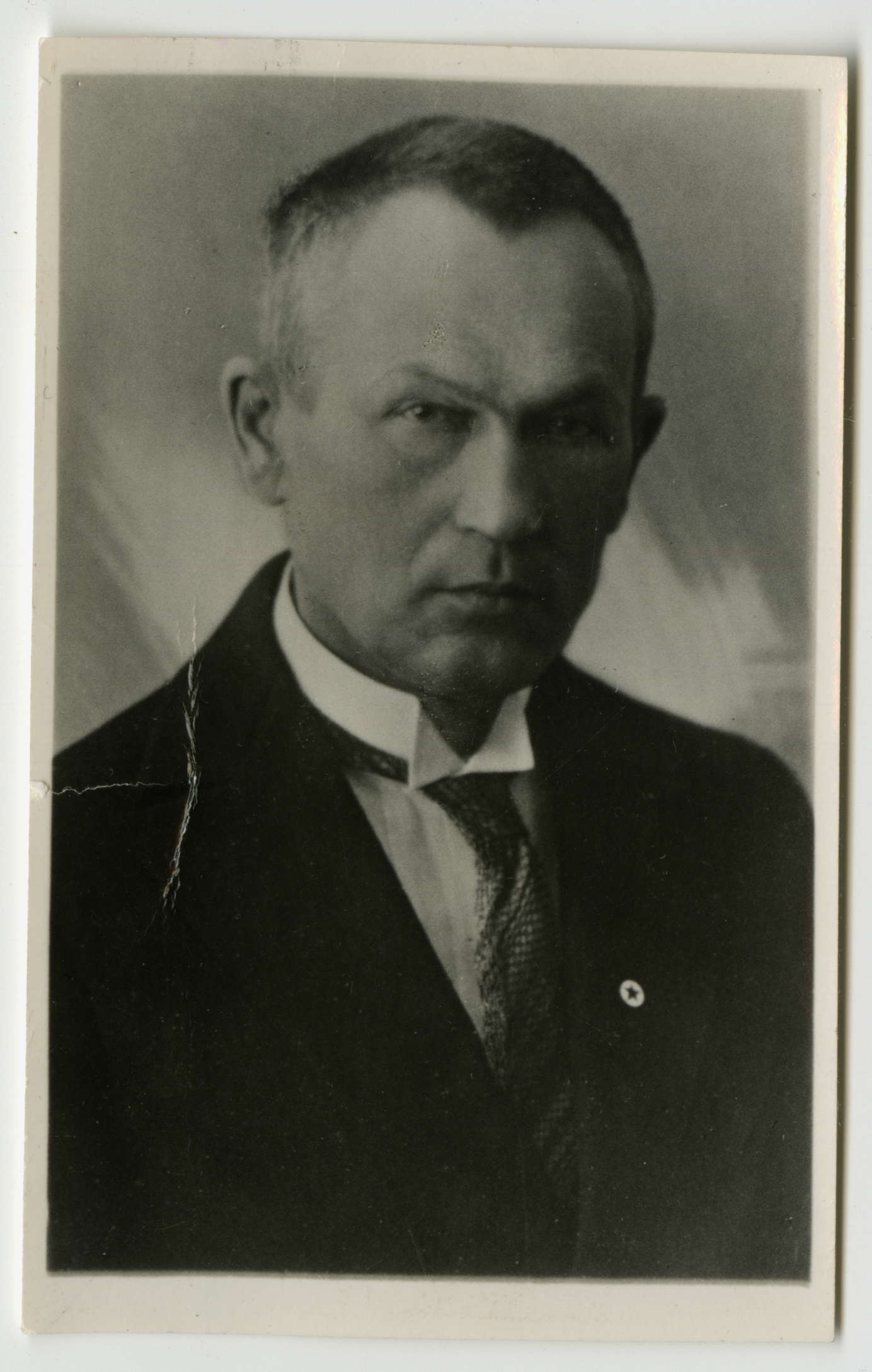
Hindrek Rikand
Hindrek Rikand (22. XII 1874–27. IV 1940) was a postal worker, poet, and children’s author.
Rikand was born in Põlva parish, Võru County. He studied at Kanepi parish school, graduated from Võru county school and worked in the postal and telegraphy field in Võru, Riga, and Tallinn. Rikand was the first head of the Estonian Post and organized the printing of the newly founded country’s first postage stamps. He coined the word ringhääling (‘broadcasting’) in Estonian. After retirement, Rikand worked on the Esperanto language, composing the first Estonian-Esperanto language dictionary. He passed away in Tallinn.
At the turn of the 20th century, Hindrek Rikand published poems in the newspaper Postimees and magazine Linda. As Rikand was energetic and interested in culture, he participated actively in the Riga Estonian community while he was living there – he conducted choirs and staged plays. At the beginning of the 20th century, several of his written or translated children’s Christmas plays were published in print. In 1920, he published the two-page work Välguvaimukesed (‘Lightning Sparkies’) explaining the working principle of the telegraph – it was the first popular science work for children by an Estonian author. In 1935, the publishing house Loodus organized a children’s literature contest to collect new positive children’s novels with local subject matter. Rikand’s romantic nationalist fairy tale collection Rahvavanema lapsed (‘The Children of the People’s Elder’, 1935, re-print in 2004) came in second and was published in the series ‘Children’s Book by Loodus’. Jüri Parijõgi, an Estonian children’s writer, called it the decade’s best fairy tale book. Rikand later published the fairy tale Hirmutekitav auto (‘The Scary Car’, 1937) in the series ‘Golden Home’, in addition to several poems and Võro language fairy tales in magazines.
One fairy tale from the collection ‘The Children of the People’s Elder’ is being read by children nowadays as well in the form of the novel Püha mardikas (‘The Holy Beetle’, 2010), which tells the story of a scarab etched into the king’s throne who comes to life and warns the king of danger to the kingdom.
L. P. (Translated by A. A.)
Books in Estonian
Children’s stories
Wälguwaimukesed: sõnake lastele [telegraafi tööst]. Tallinn: Posti-telegraafi-telefoni Peavalitsus, 1920. 2 lk.
Rahvavanema lapsed. Tartu: Loodus, 1935. 96 lk.
H. Rekand, Hirmutekitav auto. Tartu: Loodus, 1937. 15 lk.
Püha mardikas: eesti muinasjutt. Tallinn: Ilo, 2010. 13 lk.
Dictionaries
Eesti-esperanto taskusõnastik. Haapsalu: P. Tamverk’i esperanto-kirjastus, 1931. 174 lk.
Esperanto-eesti taskusõnastik = Esperanta-Estona posvortaro. Haapsalu: P. Tamverk, 1936. 235 lk.



